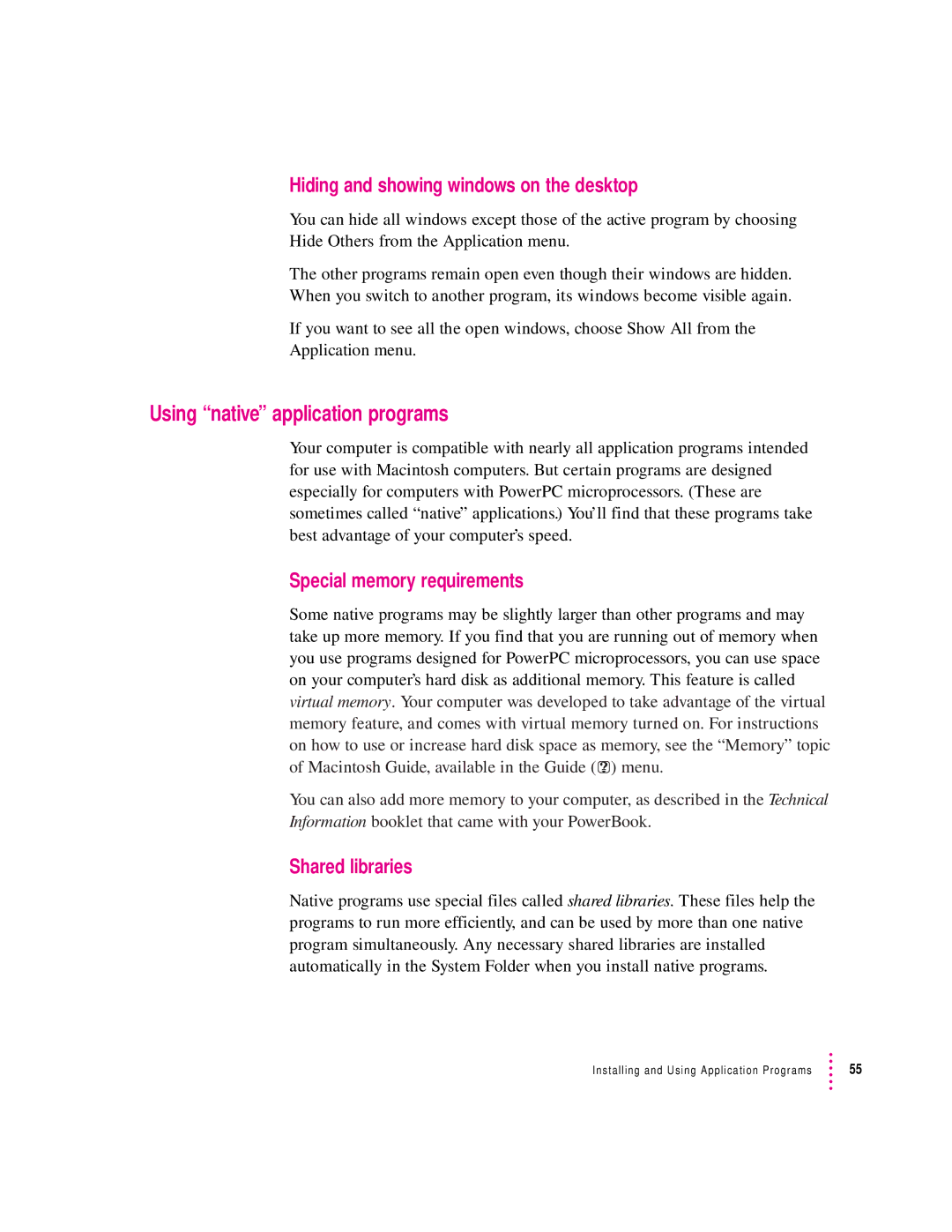Hiding and showing windows on the desktop
You can hide all windows except those of the active program by choosing
Hide Others from the Application menu.
The other programs remain open even though their windows are hidden.
When you switch to another program, its windows become visible again.
If you want to see all the open windows, choose Show All from the
Application menu.
Using “native” application programs
Your computer is compatible with nearly all application programs intended for use with Macintosh computers. But certain programs are designed especially for computers with PowerPC microprocessors. (These are sometimes called “native” applications.) You’ll find that these programs take best advantage of your computer’s speed.
Special memory requirements
Some native programs may be slightly larger than other programs and may take up more memory. If you find that you are running out of memory when you use programs designed for PowerPC microprocessors, you can use space on your computer’s hard disk as additional memory. This feature is called virtual memory. Your computer was developed to take advantage of the virtual memory feature, and comes with virtual memory turned on. For instructions on how to use or increase hard disk space as memory, see the “Memory” topic of Macintosh Guide, available in the Guide (h) menu.
You can also add more memory to your computer, as described in the Technical Information booklet that came with your PowerBook.
Shared libraries
Native programs use special files called shared libraries. These files help the programs to run more efficiently, and can be used by more than one native program simultaneously. Any necessary shared libraries are installed automatically in the System Folder when you install native programs.
Installing and Using Application Programs | 55 |
